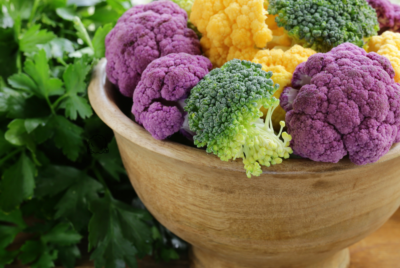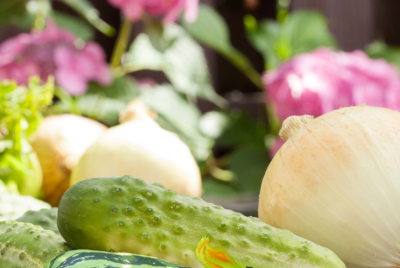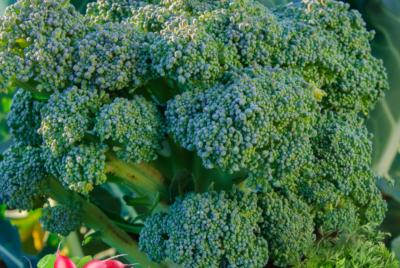Sunflower Companion Plants
Sunflower Companion Plants
Sunflower Companion plants is a fantastic way to enrich your garden. It’s not just about aesthetics; it’s a strategic method to enhance plant health and productivity. Sunflowers, with their tall stature and vibrant blooms, can be key players in this botanical partnership.

Importance of Sunflower companion plants
Overview of sunflowers in the garden
Sunflowers, with their bright, cheerful blooms, are more than just a visual delight in the garden. These towering plants, known for their large, vibrant flowers and edible seeds, serve multiple roles. They attract pollinators like bees and butterflies, vital for the health of any garden. Sunflowers also act as natural trellises for climbing plants and provide shade for smaller, more heat-sensitive species. Their deep roots help aerate the soil, improving its structure and nutrient availability. Additionally, sunflowers can act as natural wind barriers and privacy screens. Their versatility and ease of growth make them a popular choice among gardeners.

Understanding Sunflowers
Sunflowers, renowned for their iconic, sunny blooms, are hardy plants that thrive in various conditions. They are distinguished by their tall stalks, large flower heads, and preference for direct sunlight. Sunflowers are excellent for attracting pollinators, with their nectar-rich flowers being a haven for bees and butterflies. Their deep root systems benefit soil health by aerating and breaking up compact soil, enhancing nutrient availability. Beyond their aesthetic appeal, sunflowers produce seeds that are both a valuable food source for wildlife and a healthy snack for humans.
Characteristics of sunflowers
Sunflowers are characterized by their tall, sturdy stems, large, sun-facing flower heads, and vibrant yellow petals. They exhibit a unique trait called heliotropism, where young flowers track the sun’s movement across the sky. Sunflowers have deep root systems, which help in soil aeration and moisture retention. They are also known for their ability to grow in a range of soil types and environmental conditions.
Benefits of growing sunflowers
Growing sunflowers offers numerous benefits. Their striking appearance enhances garden aesthetics, creating a visually appealing landscape. Ecologically, they attract vital pollinators like bees and butterflies, promoting biodiversity. Sunflowers’ deep roots improve soil health by aerating it and aiding in moisture retention. They also serve as natural supports for climbing plants and provide shade for smaller, sun-sensitive species. Additionally, sunflowers produce seeds rich in nutrients, offering a valuable food source for wildlife and humans. Moreover, they can act as natural windbreaks and privacy screens in gardens.
Best Sunflower Companion Plants

The best companion plants for sunflowers include legumes like beans and peas, which fix nitrogen in the soil, enriching it for sunflowers. Certain herbs, such as lavender and basil, are excellent companions, deterring pests with their strong scents. Flowering plants like marigolds and cosmos attract beneficial insects and add color diversity. Vegetables like cucumbers and squash benefit from the shade and structure sunflowers provide. These companions not only complement sunflowers aesthetically but also create a mutually beneficial environment, enhancing overall garden health and productivity.
Legumes
Legumes, such as beans and peas, are excellent companions for sunflowers. They enrich the soil by fixing nitrogen, a vital nutrient that promotes healthy growth in sunflowers. These
legumes benefit from the sturdy structure of sunflowers, using them as natural supports for climbing. This pairing maximizes garden space and enhances soil fertility. Additionally, legumes’ dense foliage can help retain soil moisture and suppress weeds, creating a mutually beneficial environment for both plants.
Herbs
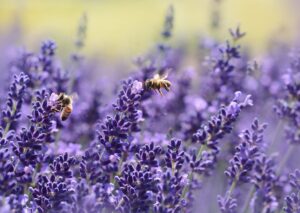
Herbs like basil, lavender, and mint make great companions for sunflowers. Their strong scents naturally deter pests, providing a chemical-free way to protect the sunflowers. These herbs also attract beneficial pollinators, enhancing the overall health and productivity of the garden. Planted alongside sunflowers, they create a diverse ecosystem that encourages beneficial insects. Furthermore, these herbs are low-growing, ensuring they don’t compete with sunflowers for sunlight, making them harmonious companions.
Flowering plants
Flowering plants like marigolds, cosmos, and zinnias are ideal companions for sunflowers. Marigolds are known for their pest-repelling properties, deterring nematodes and other garden pests. Cosmos, with their delicate, daisy-like flowers, attract beneficial insects and add a splash of color contrast to the towering sunflowers. Zinnias, in their vibrant array of colors, invite pollinators, essential for a thriving garden. These flowering companions not only complement the visual appeal of sunflowers but also contribute to a healthy, biodiverse garden ecosystem.
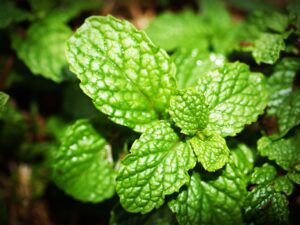
Why Companion Planting Matters
Companion planting with sunflowers plays a crucial role in sustainable gardening. It promotes biodiversity, attracting a variety of pollinators and beneficial insects.
This natural approach aids in pest control, reducing the need for chemical pesticides. Companion plants can enhance soil health, with some fixing nitrogen and others improving soil structure. Additionally, this method maximizes garden space and can lead to better plant growth and yields, creating a synergistic environment where plants support each other’s needs. Key examples include:
Bees: Various species, including honeybees and bumblebees, are drawn to sunflowers for their nectar and pollen. They play a vital role in pollination.
Butterflies: Sunflowers are a popular choice for butterflies like monarchs and swallowtails, offering both nectar and a landing platform.
Ladybugs: These insects feed on aphids and other pests, helping to control their populations in the garden.
Hoverflies: Resembling small bees, hoverflies are effective at pollinating flowers and their larvae consume aphids.
Green Lacewings: Their larvae are known to eat a variety of garden pests, including mites, aphids, and caterpillars.
These pollinators and beneficial insects not only aid in the pollination of sunflowers and other plants but also contribute to maintaining a balanced and healthy garden ecosystem.
Ecological benefits

Sunflowers offer significant ecological benefits. They serve as vital food sources for pollinators like bees and butterflies, supporting biodiversity. Their large, nectar-rich blooms are essential in sustaining these species. Sunflowers also improve soil health; their deep roots aerate the soil and enhance its structure, aiding water penetration and nutrient absorption. Additionally, sunflowers act as natural windbreaks and can mitigate soil erosion. Their ability to absorb toxins, like lead and arsenic, makes them useful in phytoremediation, helping to clean contaminated soils.
Soil health
Sunflowers contribute notably to soil health. Their deep root systems penetrate far into the soil, breaking up hardpan and improving soil structure, which enhances water infiltration and root penetration for subsequent crops. These roots also aid in nutrient cycling, bringing deeper nutrients to the surface. Sunflowers are known to extract heavy metals and toxins from the soil, a process known as phytoremediation, making them valuable in rehabilitating contaminated land. Additionally, their decay adds organic matter, further enriching the soil’s fertility and structure.
Pest control
Sunflowers can play a role in natural pest control, both directly and through their companions. For example, they attract predatory insects like ladybugs and lacewings, which feed on aphids and other harmful pests.
Planting sunflowers with marigolds is effective; marigolds release a substance that repels nematodes and other soil pests. Herbs like basil and lavender, when planted alongside sunflowers, deter a range of insects with their strong scents.
Additionally, sunflowers can act as trap crops for pests like stink bugs, drawing them away from more vulnerable plants. This integrated approach reduces the reliance on chemical pesticides, promoting a healthier garden ecosystem.
The How to of Sunflower Companion Plants
Spacing and arrangement

When planting companions with sunflowers, spacing and arrangement are key. Sunflowers should be spaced to allow sufficient sunlight and airflow for themselves and their companions. Generally, a spacing of 12-24 inches between sunflowers is ideal. Companion plants should be positioned so they aren’t overshadowed as sunflowers grow tall. Plant shorter companions, like herbs and flowering plants, around the base of sunflowers. Climbing companions like beans can be planted slightly farther away but within reach of the sunflower stalks to use them as natural supports. This thoughtful arrangement ensures healthy growth for both sunflowers and their companions.
Timing and seasonal considerations
Timing and seasonal considerations are crucial for successful sunflower companion plants. Sunflowers should be sown after the last frost, as they thrive in warm conditions. Companion plants need to be timed accordingly; plant them once the sunflowers are established but not too tall, ensuring they don’t compete for light. Consider the growth rates and cycles of both sunflowers and companions to synchronize their development. Additionally, factor in seasonal changes like temperature and daylight hours to optimize growth and health.
Common Mistakes in Companion Planting

Overcrowding
A common mistake in companion planting with sunflowers is overcrowding. Sunflowers, with their large size and significant root systems, require adequate space to thrive. Planting them too close to each other or to their companions can lead to competition for nutrients, water, and sunlight. This overcrowding can stress the plants, reducing their growth and bloom potential. It can also impede air circulation, increasing the risk of fungal diseases. Proper spacing, as per individual plant needs, is essential to ensure healthy growth and optimal yields for both sunflowers and their companions.
Incompatible pairings
Incompatible pairings with sunflowers can hinder the growth and health of the garden. Potatoes are a notable example; they compete with sunflowers for nutrients and can inhibit each other’s growth. Similarly, sunflowers should not be planted with fennel, as it secretes a substance that can inhibit the growth of many plants, including sunflowers. Cabbage and other brassicas might also struggle alongside sunflowers due to differing soil and nutrient needs. It’s important to avoid pairing sunflowers with plants that have significantly different water, light, or soil requirements, as this can lead to competition and poor growth for both.
Here are 12 examples of such incompatible pairings:
Potatoes – Compete for nutrients and can chemically inhibit sunflower growth.
Fennel – Secretes substances harmful to sunflowers and other plants.
Cabbage – Its different soil and nutrient needs conflict with those of sunflowers.
Brussels Sprouts – Like cabbage, they require different growing conditions.
Cauliflower – Has differing water and nutrient needs.
Broccoli – Another brassica that may not thrive near sunflowers.
Kale – Its growth can be stunted by the shading from sunflowers.
Lettuce – Might suffer from the lack of light due to sunflowers’ height.
Asparagus – Has a long-term growth cycle that can conflict with sunflowers.
Artichokes – Similar to asparagus, they have long-term growth needs.
Rhubarb – Requires more water and shade than sunflowers typically need.
Tomatoes – Can be affected by the sunflowers’ large root system and shading.
These examples highlight the importance of considering the specific needs of each plant to ensure a harmonious and productive garden.
Caring for Your Sunflower Companion Plant Garden

Watering and fertilizing
Proper watering and fertilizing are vital for the health of sunflowers and their companions. Sunflowers prefer deep, infrequent watering to encourage strong root growth, while companion plants may have varying water needs. Consistent moisture without overwatering is key. For fertilizing, a balanced approach is essential. Sunflowers benefit from a phosphorus-rich fertilizer for blooming, but excessive nitrogen can harm flowering. Companions should be fertilized based on their specific needs. Using organic mulches can help retain moisture and gradually enrich the soil, benefiting the entire garden ecosystem.
Pruning and maintenance
Pruning and maintenance are essential for a thriving garden. Regularly removing dead or damaged leaves and spent blooms from sunflowers and their companions encourages healthy growth and prevents disease. For sunflowers, trimming the tips can promote bushier growth. Keep an eye on companion plants for signs of overcrowding or shading, and prune accordingly. Regular weeding is crucial to reduce competition for nutrients. Additionally, staking taller sunflowers can prevent them from toppling over and damaging other plants.
Harvesting and Post-Planting Care
When to harvest
Harvesting sunflowers and their companions at the right time is crucial. For sunflowers, harvest the heads when the back turns brown, or the seeds easily come off. Companion plants like beans and peas should be picked regularly to encourage further production. Post-planting care involves cutting down sunflower stalks and composting them unless they show disease. For the soil, adding organic matter or cover crops can replenish nutrients. It’s also a good time to rotate crops to prevent soil-borne diseases and balance soil nutrients for the next planting season.
Post-harvest – crop rotation – after sunflowers and companions
For effective crop rotation after growing sunflowers and their companions, consider planting leafy greens like spinach, lettuce, or kale, which benefit from the enriched and aerated soil sunflowers leave behind. Root vegetables such as carrots, beets, and radishes are also suitable, as they thrive in the loose soil structure. Brassicas, including broccoli, cauliflower, and Brussels sprouts, can follow, utilizing the residual nutrients. Planting these varied groups helps prevent soil nutrient depletion, reduces pest and disease carryover, and maintains a healthy, balanced garden ecosystem.
Personal Experiences and Tips
Successful combinations

From personal experience, planting sunflowers with basil and marigolds has been a successful combination. The basil’s strong scent deters pests, while marigolds repel nematodes and add vibrant color. Another great pairing is sunflowers with climbing beans; the beans use the sunflower stalks as natural trellises. This not only saves space but also creates a visually appealing garden. Additionally, planting sunflowers alongside lavender has proven effective for attracting pollinators and adding a pleasant fragrance. These combinations promote a healthy, diverse, and productive garden.
Lessons learned
Through growing sunflowers with companions, I’ve learned the importance of understanding each plant’s needs. Sunflowers require ample space and sunlight, so it’s crucial not to overshadow their companions.
I discovered that biodiversity is key to a healthy garden; diverse plantings attract beneficial insects and improve soil health.
Also, timing is essential, especially when integrating fast-growing plants with sunflowers. Regular maintenance, like pruning and weeding, ensures all plants coexist harmoniously, maximizing the garden’s potential.
Conclusion on Sunflower Companion Plants
Summary of benefits and personal reflections
In conclusion, integrating sunflowers with companion plants has transformed my garden into a vibrant, eco-friendly haven. The benefits are manifold: enhanced biodiversity, improved soil health, natural pest control, and a visually stunning landscape. My personal journey with sunflowers taught me the value of understanding plant relationships and the importance of timing and maintenance. This approach not only contributes to a healthier environment but also brings immense satisfaction and a deeper connection with nature. Embracing this method can lead to a rewarding and sustainable gardening experience for any enthusiast.
FAQs on Sunflower Companion Plants
Can sunflowers be planted with any vegetable?
No, sunflowers should not be planted with certain vegetables like potatoes and fennel, as they can inhibit each other’s growth.
How much space do sunflowers need in a companion garden?
Sunflowers need about 12-24 inches of space from other plants to ensure adequate sunlight and airflow for healthy growth.
What are the best companion plants for sunflowers?

Legumes like beans and peas, herbs such as basil and lavender, and flowering plants including marigolds and cosmos make great companions for sunflowers.
Do sunflowers help improve soil health?
Yes, sunflowers improve soil health by aerating it with their deep roots and can also extract toxins, benefiting the soil and other plants.
When is the best time to harvest sunflowers and their companions?
Harvest sunflowers when the back of their heads turn brown and the seeds easily come off. For companion plants, timing varies; for example, beans and peas should be picked regularly to encourage more production.
Companion plants for echinasea
Companion plants for sweet potatoes


